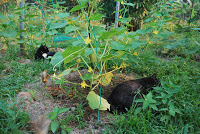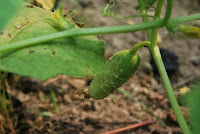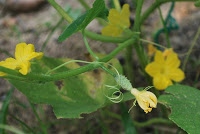Ever wondered why our ancestors appeared to have a healthier life despite not having the modern medical facilities within easy access? In my opinion, it starts with their food and lifestyle. I remember my great grandmother, Tok Nek, eating simply, always with “ulam” included for lunch or dinner. She walked everywhere, miles daily, and not at a creeping pace at that. I was always amazed at her energy.
Our Malay traditional cuisine is rich with natural vegetables and fresh ingredients which as the years go by has been over-run by processed foods and decline in freshness. Take our curry, more and more, people are using processed coconut milk, processed spices, days or weeks old fish or chicken or beef and for some, they love adding food-flavor enhancers. Sometimes, due to our lifestyles, it cannot be avoided but I always read the labels. I try to avoid ingredients that contains items that have numbers and difficult to pronounce content. More often than not, our reason for going for these expedient ingredients is lack of time. However, if we plan our meals, having fresh, less processed food does not take any longer than the current alternative.
 |
| Selection of ulam |
Our “ulam” culture have also fallen by the wayside with many preferring to opt for salads, which in my opinion is not as rich and nutritious as using our many ulam to create a salad. Maybe it is because more information is available on western salads and also the “glamour” associated with it. But have you noticed how expensive these salads are which contains mainly lettuce and tomato? An alternative which is much cheaper and nutritious is doing your own salad which contains fresh leaf baby spinach, ulam raja, kemangi, ruku, selasih, daun salam, bunga kantan and seasoned with limau kasturi and salt and pepper to taste. You get all the great stuff – vitamins A, Bs, C and K, and protein, beta-carotene, calcium, and iron to name a few – all at a fraction of the cost. These leaves also contain other benefits such as sources of traditional treatments for diabetes, cholesterol, heart diseases, tension and stress – all the illness that is prevalent in today’s modern society. Celebrate all the greens that we have!!!!
 |
| 2.4 kg Keli |
As the years go by, I tend to eat more and more fish as opposed to chicken or beef. Somehow, the idea of chicken that has been given antibiotics does not seem to appeal to me as much. The same goes for eggs that come from this “processed” chickens. I am blessed to have alternatives – I have a healthier egg source which comes from the chickens that I rear that eat all those natural food from the farm supplemented by corn. I also have a fish source – the fish from my pond which is constantly getting fresh, clean water from the hills and fed with shrimps (that is in the river naturally), other small river fish, keladi leaves, banana plant stem center and supplemented by fish pellets, albeit not that much as they have so much food naturally. A big no-no is carcasses or animal innards. It makes a huge differences to the quality and taste of the fish and there is no need to wash the fish “to death” to remove the smell. Prior to having my own fish pond, I had tried fresh water fish like keli and tilapia and I found them to have a smell and also a “muddy” taste. It left a marked impression on me and I always avoided fresh water fish thereafter. Now, I realize the importance of fresh flowing water and feed for quality and tasty fish – many of the fresh water fish producers have stagnant water ponds and some feed them carcasses as a cheap alternative fish feed. Yuck!!!!! Our ancestors ate fresh water fish that ate natural food so why do we lower our standards? For cheap food? Remember, we are what we eat so while it may be cheap in the beginning, it may turn out to result in expensive medical bills :).
 |
| Misai kucing flower |
For drinks, I enjoy drinks such as limau kasturi juice, teh misai kucing, teh kemangi and teh serai, which you may find served as a speciality drink at some restaurants at a rather high cost such as RM 10 per glass for teh serai. So, I create my own at a fraction of the cost. I was amazed to see how much a box of 10 sachets of teh misai kucing costs so I make my own using only the flowers and its flower stem, and the leaves – none of the leaf stems – which results in a nice golden brown tea that has its own sweetness and rich taste. These drinks also have a nutritional value as well as being traditionally used in the treatment of diseases – it can also help prevent these diseases. The axiom “Prevention is better than cure” holds true. Celebrate our traditional drinks!!!!
 |
| Pisang lemak manis |
Traditionally, we have also eaten our local fruits as snacks and as desserts after a main meal. Bananas, papayas, watermelon are some examples. Where bananas are concerned, there are so many varieties to suit many different taste such as pisang lemak manis, rastali, udang, embun, berangan, emas, telor, raja, awak and abu, to name a few. They are what I call the orinal variety that have not undergone genetic modification. I am a traditionalist in this aspect, I feel we shouldn’t mess with Mother Nature where it is not necessary and to leverage on natural forms of fertilization such as composting as well as regularly turning the soil so that all the organic material returns to the soil to further improve the quality of the soil. Bananas and papayas are great at breakfast as they help with our digestion system much better than taking laxatives. Celebrate our fruits!!!!
Chemical pesticides and fertilizers were also not widely used then and today, this is the easiest way for many vegetable producers to ensure plentiful produce. While we may wash the vegetables carefully, to my mind, it will always be present within the vegetable so although we may consume minute amounts, over time, this can be quite substantial. At the same time, this will pollute the land. Since I enjoy “grazing” as I walk on the farm, these are banned items which drives the guy that works for me crazy as it makes it more work to control the weeds which thrives on the rich soil. It is a never-ending battle but at the end of the day, I think the effort is worth it. So, let us all celebrate our eating tradition 🙂
 I was introduced to these cucumbers by one of my staff, Aziz. It is very popular with people from Kerinci, Sumatera and I later found out that it is also popular with “ulam” afficionados. Aziz’s mother obtained some seeds for me from Kerinci and I decided to experiment with it last year and when I took it to market early this year, it was very popular. I love seeing the infusion of bright yellow flowers and it appears that my cats enjoy sitting near them in my current planting.
I was introduced to these cucumbers by one of my staff, Aziz. It is very popular with people from Kerinci, Sumatera and I later found out that it is also popular with “ulam” afficionados. Aziz’s mother obtained some seeds for me from Kerinci and I decided to experiment with it last year and when I took it to market early this year, it was very popular. I love seeing the infusion of bright yellow flowers and it appears that my cats enjoy sitting near them in my current planting. Being busy with the construction at the farm in the last six months, I didn’t get to focus much on farming so in last month, I decided it was time to shift more attention to the farm and started planting this cucumber. It takes about 3-5 days for the seeds to germinate once sown in soil, It is a climber so I had to prepare a trellis-like structure. By encouraging it to climb, it will ease the effort during harvesting as well as keeping the cucumbers nice and clean.
Being busy with the construction at the farm in the last six months, I didn’t get to focus much on farming so in last month, I decided it was time to shift more attention to the farm and started planting this cucumber. It takes about 3-5 days for the seeds to germinate once sown in soil, It is a climber so I had to prepare a trellis-like structure. By encouraging it to climb, it will ease the effort during harvesting as well as keeping the cucumbers nice and clean. I prepared the soil by adding mulch, burnt organic matter and vermicompost as well turning the soil many times to ensure it all mixed well as well as removing unwanted matter. I enjoyed tracking the progress of this plant as it started to produce more leaves and beautiful yellow flowers, the precursor to the cucumbers. On alternate days, I will adjust the “arms and legs” of this plant so that it will climb in such a way to ease my efforts when it comes time to pick the cucumbers as well as to create a beautiful arbor in about a months time, creating a lovely addition to the landscape. The effort was well worth it when in about 2 weeks, the flowers began to blossom.
I prepared the soil by adding mulch, burnt organic matter and vermicompost as well turning the soil many times to ensure it all mixed well as well as removing unwanted matter. I enjoyed tracking the progress of this plant as it started to produce more leaves and beautiful yellow flowers, the precursor to the cucumbers. On alternate days, I will adjust the “arms and legs” of this plant so that it will climb in such a way to ease my efforts when it comes time to pick the cucumbers as well as to create a beautiful arbor in about a months time, creating a lovely addition to the landscape. The effort was well worth it when in about 2 weeks, the flowers began to blossom. Three weeks later I noticed that the cucumbers had began to form as well as many flowers were blossoming and more buds forming. The cucumbers seem to grow at a rather quick rate when in just a few days they increase in size to just about the right size to eat. I find that it is best to eat them when their skins just smooth-out and about 4 inches or 10-11cm in length.
Three weeks later I noticed that the cucumbers had began to form as well as many flowers were blossoming and more buds forming. The cucumbers seem to grow at a rather quick rate when in just a few days they increase in size to just about the right size to eat. I find that it is best to eat them when their skins just smooth-out and about 4 inches or 10-11cm in length.














































